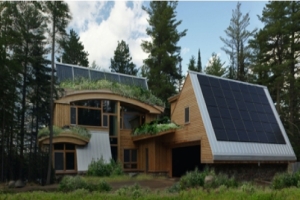

A Case for Investing in Green Residential Rentals
Question: “If you’re a multi-family developer, why would you build green?”
Your not benefiting from your tenants lower utility bill, why should you care?
It’s becoming clear that terms like “green” and “sustainable” are not just a passing fad in the development industry. As gas and other utilities continue to rise, it is clear that it just makes since for you to build green in most scenarios. Studies are beginning to pour in from sources such as the Urban Land Institute and National Association of Home Builders showing statistics that single-family homeowners want sustainable building techniques in their new homes. What’s more important for developers is they are willing to pay for them.
Presently this technology, like most, is experiencing a “trickle down effect.” Our vision of green has changed. Ten years ago the typical vision of a “green” house looked like a spaceship with huge solar panels covering the roof with a price tag that included two commas. However, today’s LEED Certified house could go undetected on a residential street. Today it is not uncommon to see products such as more efficient insulation and Low-E windows being installed in affordable housing. Just a few years ago items such as these were viewed only as options for high-end construction.
 What many people think a "green" house must look like
What many people think a "green" house must look like  What today's LEED Certified could look like.
What today's LEED Certified could look like. Similar studies show that tenants in green office buildings experience increased productivity and fewer sick days. The research also found that that green buildings have lower vacancy rates and higher rents than non-green counterparts. Therefore, it is easy to see why owners and tenants alike could clearly see benefits to building sustainably.
Which leads us back to the question. Developers that are debating spending the extra time, effort, and money to build green should consider focusing on the under-35 demographic in their area. This “Generation Y” demo were the first to grow up thinking “You know, it might not have been the best thing for my parents to have painted our baby cribs with led based paint.” has now graduated college, and started their career. Due to current economic conditions and trend in this age group, many have chosen to hold off purchasing their first home and opted for renting. This is also the primary group that will place value on your development not only lowering their utility bills but possibly raise their standard of living.
Most developers are willing to invest in sustainable features when it is clear that consumers are requesting them, or they believe it will be a factor in their decision making process. If a feature can offer the developer less than a five-year return on investment, most would consider this a “no brainer.” It is important to consider the idea that this return may not come only in the form of premium rent. Particular markets my choose “green housing” over standard construction but not see a need to place premium rent on it. A developer could additionally view the lower vacancy as a form of return as well.
Answer: “It Depends.” I see valid points on both side of the discussion. Some developers believe that it is their responsibility to always build green, no matter the cost or return. There are also developers that refuse to build anything more than the market will accept to maximize profits. Personally, you can find me in the middle of these two thoughts. I do not believe that every structure built needs to be Net-Zero or LEED Platinum with disregard of financial outcome. However, the investment should be made if your research shows there is potential to see positive returns with the addition of green components. If for no other reason you are after all doing your little part to save the earth.
I would love to hear what you have to say about this. “Why build green?”

Comments